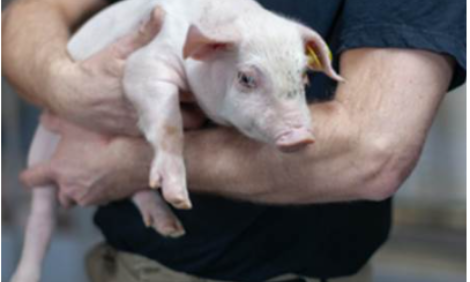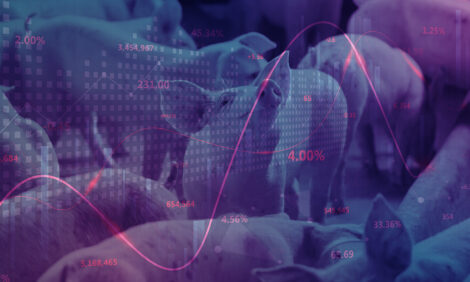



Gilt and First Litter Sow Management
Tips on housing and feeding young sows for a long productive life from Ed Barrie, Sow Weaner Pig Specialist with the Ontario ministry of agriculture in the latest issue of Pork News and Views from OMAFRA.In recent years, genetic programmes have made significant progress in increasing the number of live piglets born to sows. As the number of live births have increased, so too have the death rate of sows, as well as serious decrease in sow longevity. These events lead to the conclusion that we need to improve the management of the gilts prior to breeding. This points to a need to review the areas of nutrition, environment and management.
Environment is the living space the young animal grows and develops in. Historically, we have paid little attention to this area and often considered crowding and concern over temperature controls, to be the norm. When we consider that the gilts today are, in fact, significantly leaner – absolutely less body and back fat, and selected for efficiencies in feed conversion and growth rate, we realise the need for a different approach to housing and management.
* "We need to improve the management of the gilts prior to breeding" |
Gilt housing should have non-slip surfaces, as much as possible, for footing. It is not good production economics to lose valuable selected gilts because of physical damage resulting from slippery flooring. Similarly, walls and partitions should have animal-friendly rounded corners or posts to reduce the chances of injury from bruising and scraping during routine pen events. The pen should be equipped with suitable feeder spaces so that all animals can eat at once to eliminate aggressive behaviour during feedings.
Watering systems should be examined regularly to ensure both adequate delivery rates, and availability throughout the pen area. This is a situation where chain suspended nipple drinkers provide plenty of water without being a fixed object capable of injuring an animal.
Room temperature is another area that is often overlooked in gilt housing. Temperatures for gilt housing should be maintained in the range of 21°C where possible (70°F). Cooler air temperatures mean more feed is consumed by the animal to keep warm. Higher temperatures are best dealt with by moving large quantities of air, to provide a cooling effect to the animal.
Nutrition is a very important part of gilt and sow development. Current thinking leans toward a programme that avoids overfeeding gestating gilts with the object of improving first lactation feed intake. This, of course, requires strict control of the quantity of feed fed and to which animals it is fed. Electronic feeders or feeding stalls do very well in this situation.
* "It is becoming an accepted practice to top-dress or supplemental feed gilts and lactating sows" |
Diet formulation is another area of great concern. This is best worked out between yourself, your feed supplier and your genetic supplier. Not all genetics are the same, nor are all feeds the same. If possible, an increased level of lysine is added to gilt diets during lactation. It is also becoming an accepted practice to top- dress or supplemental feed gilts and lactating sows at levels of between 0.5 and 1.0kg per day. This feeding is usually delivered at some point in the day when the feeder is empty. It is a carefully formulated product possibly containing energy, protein, fats or oils, and vitamins and minerals. The small amounts ensure it is consumed and do not interfere with the regular feeding programme in the barn. It is often delivered manually and this allows another opportunity for the barn manager to visually check the animals in the farrowing rooms and to locate any which may require assistance or are not eating.
If you choose to try some of these strategies, their basic intent is to get a healthy, productive gilt into the third to sixth parity period, while reducing culling losses, unexpected death losses and improving vigour and piglet numbers produced per sow. Much of this information can also be applied to sows in the three to six parity grouping as well.
March 2011








